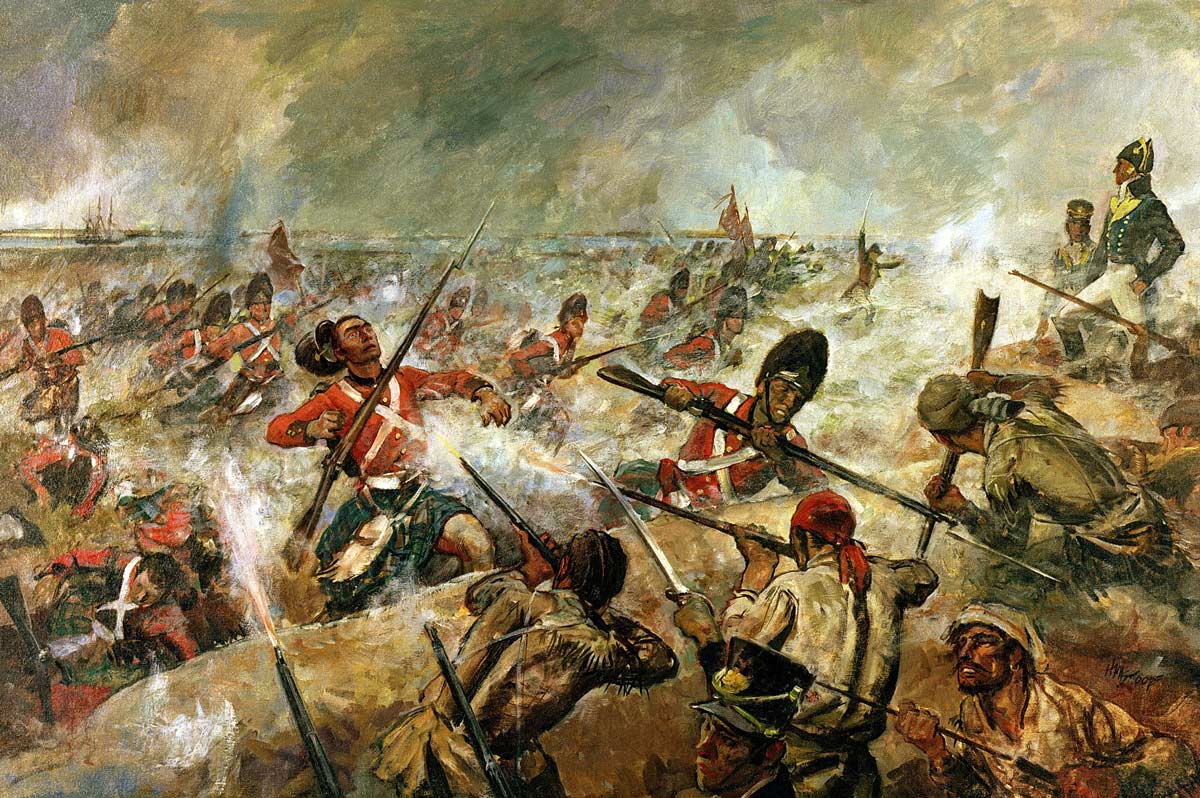
Bracing for Conflicts
Signs of conflict brewed for years before the outbreak of war in 1812. No one could see with perfect foresight where the heightening tensions would ultimately lead. Some believed war might be avoided through diplomatic maneuvering. Others hoped that strategic alliances would help secure their interests should war come.
In the years leading up to the conflict, different groups sought to prepare themselves as best they could for an uncertain future. From the Great European powers to America’s political parties, from indigenous tribes on the frontier to individuals in towns and homes throughout North America, inhabitants tried to brace themselves for mounting conflicts. The war that finally broke out was not one conflict but many—fights that would have long-term consequences for the people and groups caught up in them.
Defining the Stakes
The vote to declare war in 1812 was the closest in American history—and the decision had consequences that reached far beyond the halls of Congress. For those in positions of political or economic power, the conflict might have appeared straightforward, involving trading rights, territorial boundaries, and political power. For many others, however, the conflict was far more ambiguous. The outbreak of war forced individuals, groups, and nations to declare allegiances, form alliances, and reaffirm loyalties.
What the war would mean, and what was at stake in its outcome, was very different for different groups caught up in it. Many residents of North America found themselves trapped between competing interests. American Loyalists who had fled to Canada following the War of Independence were ensnared in a difficult bind as Britain and the United States renewed old hostilities, and once again they confronted fighting family members and former neighbors. Native tribes living in border areas found themselves choosing between two unsympathetic sides. African-Americans, both free and enslaved, navigated especially difficult choices, torn between an imperial power offering liberty and a young nation’s unfulfilled promise of equality. Much more was at stake than simply the political aims of the belligerent nations.
Fighting the Battles
The fighting in the War of1812 raged from Canada to the American capital, from inland lakes to the Atlantic, from the eastern seaboard to the western frontier. It drew in many different combatants, from professional British soldiers to American militiamen to Native warriors. Outcomes were unpredictable: on land, Americans found their early confidence spoiled by a series of setbacks in Canada and on the frontier, while at sea the modest American fleet acquitted itself surprisingly well against the mighty British navy.
For those caught up in the fighting, however, the battles often were devastating and terrifying affairs. Whatever their allegiance, soldiers faced brutal violence, feeble medical treatment, and a relentless kind of warfare that left families shattered and towns destroyed. And, in a final twist, the Americans’ most astonishing victory, the lopsided Battle of New Orleans. As American troops defeated their British opponents in January 1815, a peace treaty, negotiated weeks earlier, was already on its way to Washington to be ratified to end the war.
Living through Conflicts
War’s effects are never limited simply to soldiers in combat, and the War of 1812 was no different. No sharp line divided combatants from noncombatants or battlefield from home. Even those who desperately wanted to avoid the military struggle altogether found themselves dragged into the war in painful and unforeseen ways.
As the war raged around them, civilians and noncombatants attempted to deal with the effects of the fighting when it spilled into their lives. Villages burned to ashes; wives tried to care for families with husbands gone to war; citizens offered aid to their own armies or tried to maintain a semblance of normalcy even in the midst of violent upheaval. From riots in Baltimore to the declaration of martial law in New Orleans, the experience of living through the war altered lives and communities in ways few had anticipated.
Negotiating in War and Peace
Diplomatic negotiations officially ended the hostilities in February 1815. The Treaty of Ghent brought peace between Britain and the United States and an end to three years of fighting that inflicted thousands of deaths and incalculable miseries.
But formal diplomacy was only one kind of negotiation that occurred during the war years. From the moment the war broke out, individuals and groups engaged in complex and often ambiguous negotiations as they tried to steer a course through the conflict. Political parties negotiated with their opponents; soldiers negotiated with their officers; women negotiated new roles in society; enslaved African-Americans negotiated the territory between bondage and freedom. Those wartime negotiations did not end abruptly with the signing of an official treaty. And many of the negotiations left legacies that lingered long after the formal cessation of hostilities.
Creating Legacies
The memory of the war lingered long after the guns fell silent. The Treaty of Ghent ended the fighting, but the consequences of the war cast a long shadow over the succeeding decades. With formal military engagements at a close, participants in the war began the struggle to shape its legacy. And the stories they told about the conflict were often at odds with the historical record of events themselves.
Veterans, politicians, historians, and others engaged in an active process of deciding what to remember about the war. It was a dynamic, and often contentious, process. With so many groups involved in the fighting and so many competing interests at stake, the process of creating the memory of the war often proved contested territory.The emerging narratives about the legacy of the War of 1812—who would be revered and who relegated to obscurity, which events would be singled out as turning points and which mostly forgotten—shaped the way future generations thought about the war.

